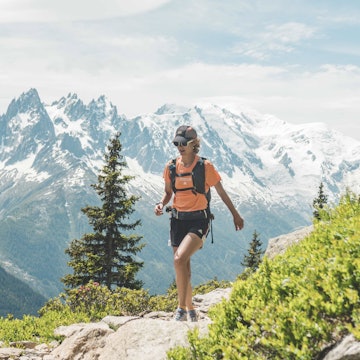
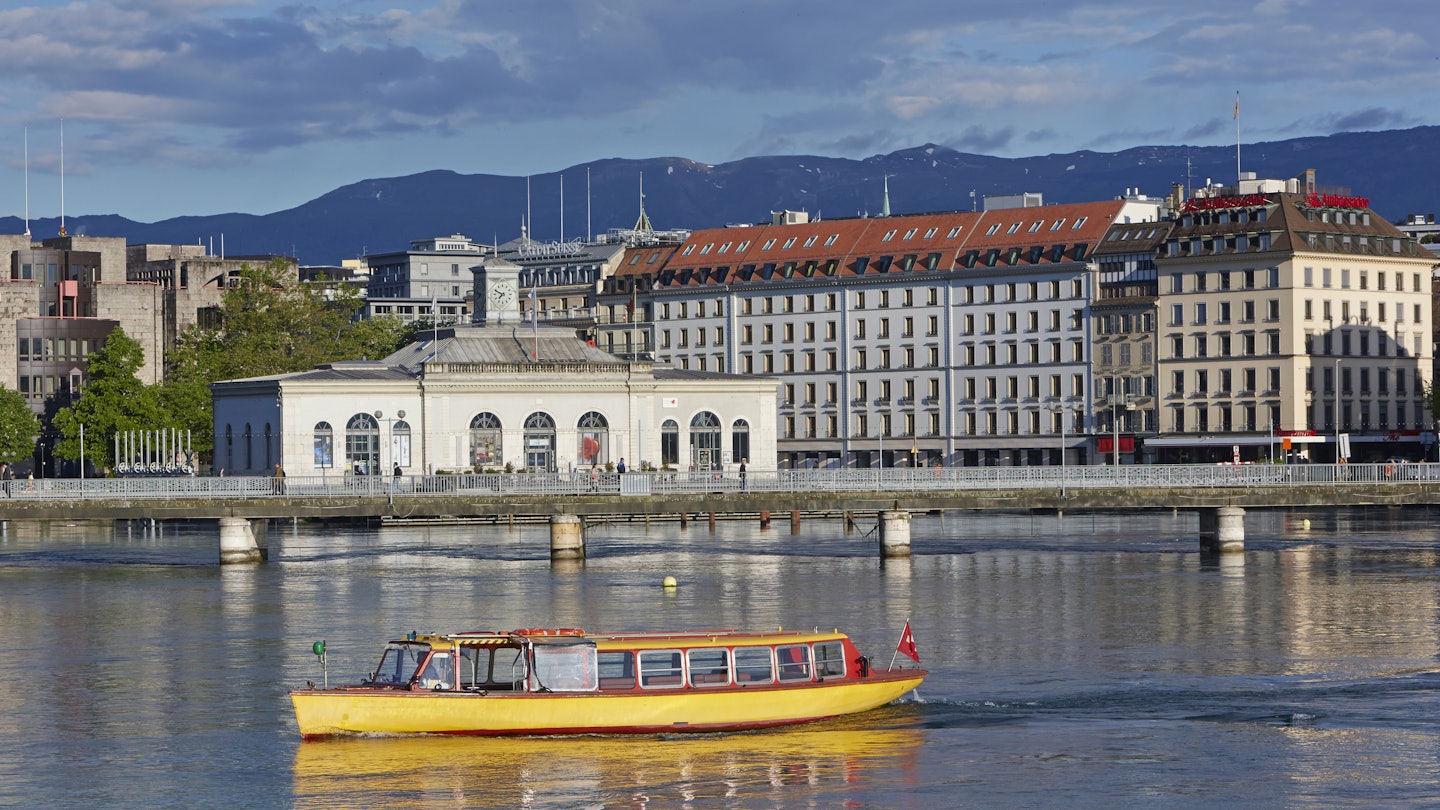
From lake tours to sampling the work of master chocolatiers, there's plenty to do in Geneva. Allan Baxter/Getty Images
Glinting in the sun in the far west of Switzerland, French-speaking Geneva is a rare breed of city. With the air of wealth and prestige emanating from its luxury jewelers, chocolate shops and investment banks, Geneva’s flawless, glossy veneer can feel impenetrable. But meander away from the hilltop old town and manicured lakeshore – into grungier Pâquis, village-like Carouge or along the post-industrial banks of the Rhône River – and a different Geneva emerges, quietly humming with attitude and buzzing with artists, activists and drifters.
As you might expect, Lake Geneva is a Swiss-French affair. Pristine steamers from the 1900s cross an invisible international border tracing a line across the middle of this crescent-shaped pool of freshwater – Europe’s largest lake. Then there’s 4806m (15,766ft) Mont Blanc, Western Europe’s highest peak, keeping sentry over the French Alps across the water.
A place of international diplomacy since the 16th century, Geneva (Genève) is Switzerland’s second-largest city – a slick, cosmopolitan place, where seemingly every language under the sun is spoken. This famously international city has a handsome old town, renowned museums, vibrant nightlife and an impressive array of attractions that draw visitors from around the world.
Get some inside tips before you go, then plan your trip with this guide to the best things to do in Geneva.
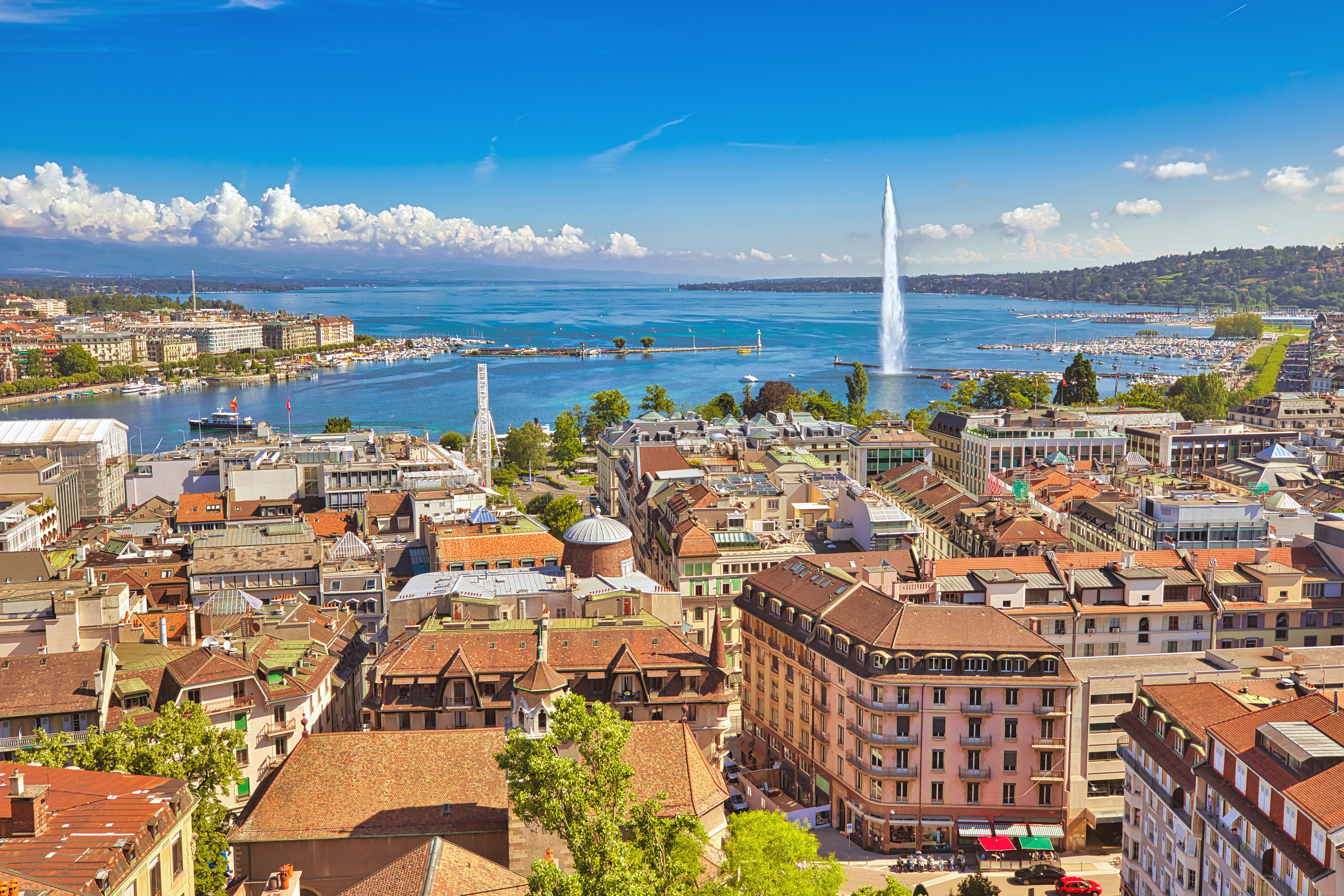
1. Take in a bird’s-eye view from the heart of Geneva
Old Geneva’s antique heartbeat resonates in its hilltop Vieille Ville, once occupied by the Romans and later the site of a 5th-century bishopric. Unearth the city’s Celtic and Roman origins at the Site Archéologique hidden away beneath Cathédrale St-Pierre.
A bonfire is lit in the cathedral square during December’s L’Escalade festival to celebrate Geneva’s defeat of Savoy troops in 1602. Legend hails a Genevan housewife as the hero who tipped a pot of boiling soup over a trooper’s head from the city walls, whacked him with her cauldron, and raised the alarm.
During the 16th-century Reformation, French theologist Jean Calvin (1509–64) preached fiery sermons inside the Gothic cathedral, which features an 18th-century neoclassical portico purportedly inspired by Rome’s Pantheon. Spiral up 157 steps in the north or south tower for bird’s-eye views of the old town.
Planning tip: The cathedral towers are open late on select nights for panoramic views of the city by moonlight. While the south tower has an open balcony, the north tower is enclosed and is a better option during inclement weather. For more rooftop views, head to Terrasse Agrippa d’Aubigné, a tree-shaded park behind the cathedral.
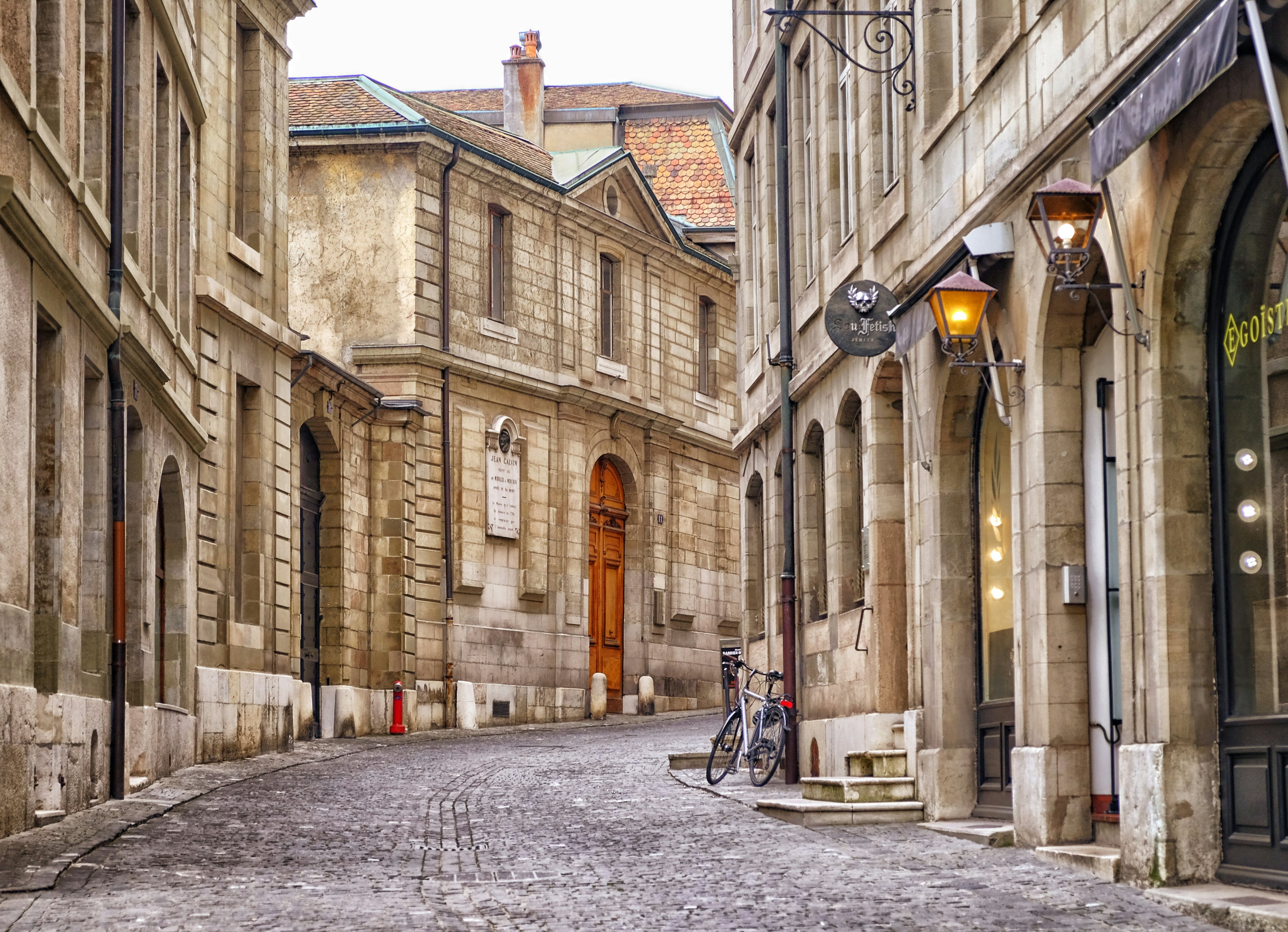
2. Let the city’s story unfold on a walking tour of Old Geneva
The Geneva tourist office maps out superb, themed DIY walking trails in the city, highlighting Geneva’s best districts and attractions, along with some of the city’s most beautiful scenery. Old Geneva is home to more than 67 museums and galleries exploring the area’s rich history and culture.
After ascending the towers of the Cathédrale St-Pierre, continue to Musée International de la Réforme and learn how Calvin’s Geneva became a safe haven for Protestant refugees persecuted for their faith.
Follow Rue Otto Barblan past the 17th-century townhouse known as Les Amures, today a luxurious hotel, and continue uphill to the city’s oldest surviving residential building, 14th-century Maison Tavel, and the Arsenal, showcasing cannons once aimed squarely at Savoy.
On the old town’s main thoroughfare, Grand-Rue, 18th-century philosopher Jean-Jacques Rousseau (1712–78) was born at No 40 – now the Maison de Rousseau et de la Literature. End your walk on Place du Bourg-de-Four; once the site of a Roman forum and the setting for wildly popular medieval fairs in the 13th century, it’s abuzz with cafe terraces today.
3. Browse the stalls at Marché de Rive
Lap up urban life at Marché de Rive (also called Marché Helvétique) on Saturday and Wednesday mornings. Open-air stalls piled high with seasonal produce grown by maraîchers (market gardeners) in surrounding villages spill along Bd Helvétique.
On nearby Rue Louis Duchosal, Genevans pop caviar on the sleek pavement terrace of Planet Caviar, while fridge-mechanic-turned-fisherman Julien Monney sells his catch – perch, whitefish, arctic char or crayfish, depending on the season – caught from his fishing boat in Hermance, about 14.5km (9 miles) north.
Sit down to taste wine from Domaine de la Devinière at this organic winery’s market stall, and buy urban honey from Genevabeez. For cheese, charcuterie and pre-prepared dishes, dive into the indoor food market known as Halle de Rive on Bd Helvétique.
Planning Tip: After perusing the market, walk five minutes north along Bd Helvétique and duck right up the staircase beside the Musée d’Arts et d’Histoire. In the Légumes en Ville vegetable garden, information panels explain the crops by season, and tree-shaded sofas and armchairs crafted from wooden pallets are a perfect picnic spot.

4. Take a waterfront stroll along Quai du Mont Blanc
Flowers, statues, alfresco photography exhibitions and – on clear days – superlative views of Mont Blanc lure visitors to the aptly named Quai du Mont Blanc. Geneva’s picturesque northern lakeshore promenade leads past the Bains des Pâquis, vintage public baths where the Genevois have frolicked in the sun since 1872.
Continue to Parc de la Perle du Lac, a city park where the Romans built ornate thermal baths. Further north, the peacock-studded lawns of Parc de l’Ariana ensnare the UN’s headquarters and Geneva’s Conservatoire et Jardin Botaniques – botanical gardens planted with 12,000 species from around the world.
5. Watch Genevan watchmakers at work
In a city synonymous with luxury timepieces, precision is key. After all, this is where the humble wristwatch was first embellished with a wind-up crown, perpetual calendar and sky charts blazing 400 stars in the night sky.
With the austerity of the Reformation, Genevan goldsmiths and jewelers turned their hand to watchmaking and by 1760, the city was home to 600 master watchmakers. Geneva-based Rolex, Richemont and Patek Philippe are among the 700 watchmaking companies with headquarters in Switzerland today.
Geneva’s Patek Philippe Museum is as much a study in social etiquette as a watch museum. Here, you’ll learn about a family firm from 1839 whose limited-edition timepieces cost upward of Sfr20,000 (US$21,811) and command a waiting list of years.
From Tuesday to Friday, you can watch highly skilled watchmakers at work in restoration workshops and take a self-guided digital audio tour around the elegant museum, styled like a sumptuous jewelry shop with plush carpets, wood paneling and glass cabinets displaying some 2500 timepieces from the 16th century to the present day.
Planning tip: Punctuality is essential to secure one of 20 spots on the two-hour Saturday afternoon guided tour in English (Sfr15/US$16). Arrive no later than 12:45pm; the tour begins at 2:30pm and no reservations are taken.

6. Sample haute cuisine
Geneva exudes luxury, and its food is no exception. From seasonal produce and artisanal delights at the Marché de Rive to premier offerings from coffee shops, historic chocolatiers and restaurants with a lakefront view, there’s no shortage of fine foods to enjoy.
Tranquil little cafés such as Birdie and the Barista Lab delight with quick, high-quality bites and coffees to start the day. For unforgettable fine dining experiences, choose from multiple Michelin-starred restaurants such as the theatrical L’Atelier Robuchon, the legendary Le Chat-Botte or the intimate L’Aparté.
A true chocolate destination, Geneva’s reputation for premium confectionery is well-known around the world. There are dozens of chocolate shops, including the iconic pioneer of Swiss chocolate, Favarger, and one of the city’s oldest manufacturers, Chocolaterie Arn, located in Old Town’s Place du Bourg-de-Four.
Auer in downtown Geneva is one of the city’s most popular confectioners thanks to signature creations such as amandes princesses, pavés glacés de Genève and a dizzying selection of expertly crafted truffles. Round out your tour of Geneva’s culinary riches by sipping Champagne aboard La Buvette du Bateau – the lake views from this retired 1896 paddle steamer moored by the Jet d’Eau fountain are unparalleled.
7. Find peace with the souls of Swiss presidents
Leave the crowds behind at Cimetière des Rois (Cemetery of Kings), a serene and eclectic urban cemetery in Plainpalais. It was built outside the city walls in the 15th century to bury plague victims, and during the Reformation a century later, it became the final resting place of many Genevans – notably without tombstones, as per the ecclesiastical custom of this austere “Protestant Rome.”
The simple stone engraved with the initials “JC,” marking the grave of zealous Protestant preacher Jean Calvin (1509–64), was added later in the 19th century. Genevan statesmen, politicians, doctors, bankers and academics were also buried here.
The graves in the cemetery are marked by a whimsical mix of rocks, sculptures and headstones randomly peppering lush lawns in the shade of centurion trees strung with bird boxes.
Planning tip: Keep an eye out for rogue artworks disguised as tombstones created by contemporary artists, including Gianni Motti’s provocative 2016 work, Je vous avais dit que je n’allais pas très bien (“I told you I wasn’t very well”).

8. Witness science in action at CERN
Searching for the particles that make up matter is the job of the top-drawer physicists at the European Organization for Nuclear Research, or CERN. This is where British scientist Tim Berners Lee invented the World Wide Web in 1989, and where protons are pushed down a 26km (16-mile) tube inside the Large Hadron Collider at close to the speed of light to collide and create new matter.
Spots on 90-minute guided tours around the vast research center and underground laboratory in Meyrin are like gold dust – download their app to register and check availability one to two hours ahead. Early mornings and Sundays are your best bet.
Even if you can’t get a space on a tour, the state-of-the-art Science Gateway, designed in 2023 by celebrity Italian architect Renzo Piano, shines brilliant new light on CERN’s work, with science shows, interactive exhibitions and films. Get here on tram 18, leaving from Geneva train station.
Planning tip: To learn more about ugly quarks and beautiful antiquarks, rent a mountain bike from Meyrinroule near the entrance to CERN and embark on an imaginary mission to restart its particle accelerator. On the free “Passport to the Big Bang” cycling route, you’ll cycle around 10 stations, collecting activation codes as you go. The circular route covers 54km (33.5 miles) but it can be tackled in segments.
9. Learn about Swiss neutrality and the creation of the Red Cross
It was lucky for the world that Genevan businessman Henry Dunant happened to pass through Solferino in Italy in 1859. The horrors he encountered – thousands of wounded Italian, French and Austrian soldiers, left to die where they fell during the Battle of Solferino – inspired him to round up volunteers to provide first aid.
Back home, he campaigned for the creation of national bodies trained to provide neutral medical assistance in times of war. This led to the creation of the international Red Cross movement in 1863. A year later, the Geneva Convention granted neutrality and protection to medical personnel and the wounded on battlefields.
In 1901, Dunant won the first Nobel Peace Prize for his humanitarian efforts. Learn more at Geneva’s compelling Musée International de la Croix-Rouge et du Croissant-Rouge.
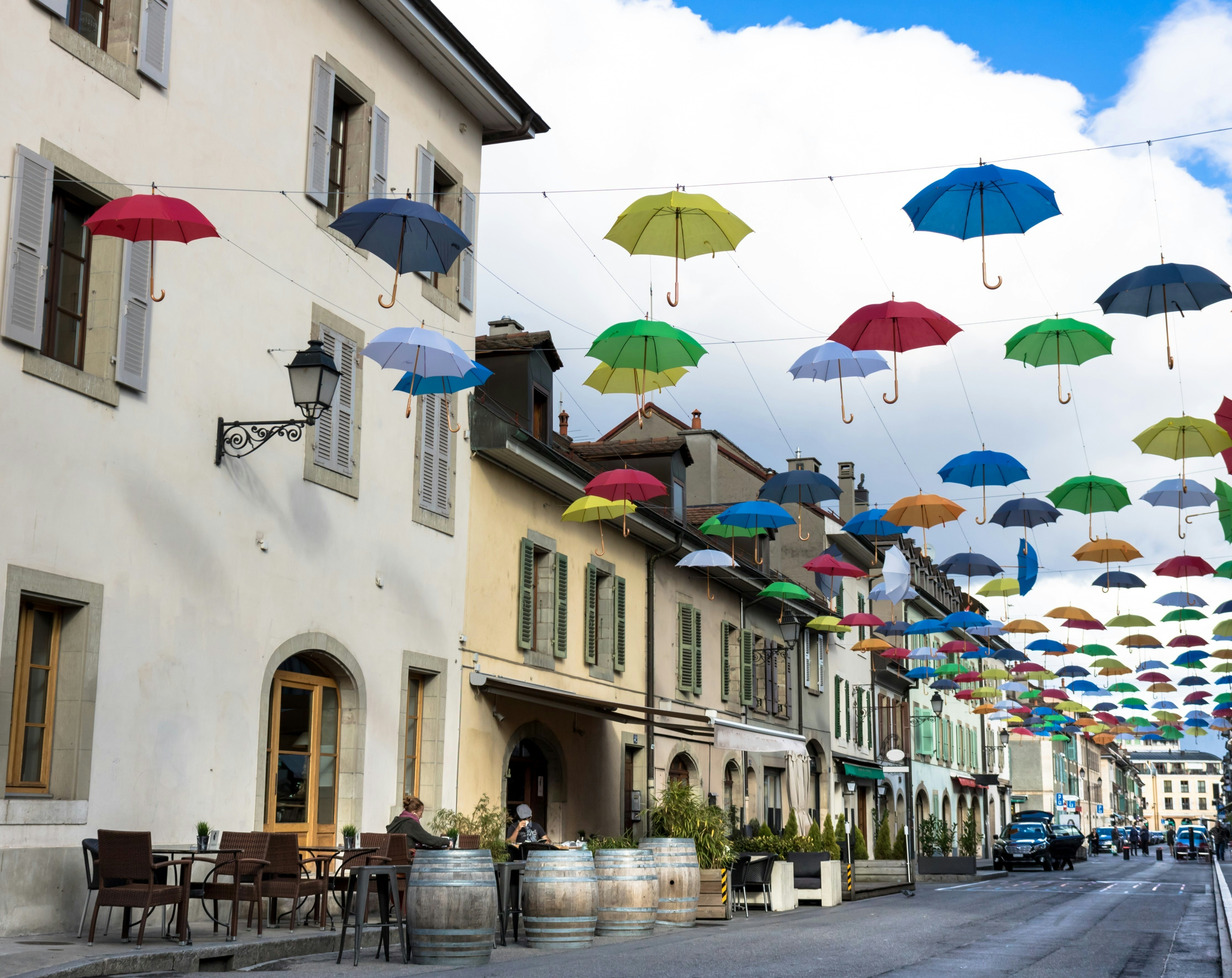
10. Bask in the Bohemian charm of Carouge
In the artsy satellite city of Carouge, 18th-century houses open onto courtyard gardens and ceramics conjure up 19th-century history at the tiny Musée de Carouge. Yesteryear rival to Geneva, this once-powerful settlement was refashioned in the 18th century by Vittorio Amedeo III, king of Sardinia and Duke of Savoy, in a bid to outdo Geneva as a center of commerce.
In 1816, the Treaty of Turin handed Carouge to Geneva. Today, narrow streets lined with cafe terraces, boutiques, artists’ workshops and late-night music bars such as Chat Noir create a village vibe.
A market unfurls beneath the plane trees on Place du Marché on Wednesday and Saturday mornings. Have lunch afterward at Café du Marché (try the feather-light Grand Marnier soufflé). The Thursday market, held from 2pm to 9pm, is an after-work “drinks and tapas” institution.
Planning tip: In December, horse-drawn carriages line up on Place de l’Octroi to take Christmas shoppers for a festive ride. Tram 18 links the train station and Place du Marché in about 20 minutes.
11. Admire contemporary art after dark in Plainpalais
Nightfall shines a light on Geneva’s eye-catching public art, an ephemeral feast of contemporary sculptures and installations that extends well beyond the illumination of the Jet d’Eau fountain, celebrating various events throughout the year.
The soft glow of summer evenings lends added atmosphere to the industrial architecture of the Modern and Contemporary Art Museum (MAMCO), a cutting-edge setting for youth-oriented, international and cross-media exhibitions, set in a 1950s factory. End on Plaine de Plainpalais, a massive diamond-shaped plaza illuminated by several thought-provoking neon and LED light artworks on the rooftops – look up!
Planning tip: Visit in July or August when the museum opens late (from 5pm to 10pm, with free admission) and live music, DJs and festive soirees spill across its courtyard.

12. Get a closer look at nature’s serene beauty
Venture out of this cosmopolitan city for outdoor adventures in the surrounding countryside. Whichever direction you head out of town, you can’t go wrong. Stick to the waterfront and you’ll soon be surrounded by medieval villages, bijou pleasure ports and grassy “beaches” cascading down to pebbly shores.
Head away from the water and breathtaking views of Lake Geneva, the Jura mountains, Alps and snow-white Mont Blanc in France blow your mind. Try heading south by cable car to the summit of 1379m (4524ft) Mont Salève or north on foot to bulbous La Dôle (1677m/5502ft).
There’s no right way to explore Geneva’s très belle surroundings. Take your pick from bikes, hiking, boats, paddleboards, cable cars, snowshoes or a rental car, then use Geneva as a springboard to reach villages and pristine nature.
Planning tip: The Mont Salève cable car runs at night on select evenings through the summer, but it closes annually in November as well as during extreme weather. Check ahead for access times, and don’t forget your passport or ID card when crossing the French border.
13. Revel in the nightlife with drinks and dancing
Geneva has an ample selection of cocktail bars and live music venues. Kick off the night mingling with a hip crowd on the trendy barge Bateau Lavoir, moored between Pont de la Coulouvrenière and the old market hall, then head to the glam Le Baroque, a swanky club and staple of the city’s nightlife scene.
In Carouge, Chat Noir embodies the Bohemian vibe with diverse entertainment, from slam evenings and improv to stand-up and concerts. The venue is open late into the night, serving gourmet dishes and creative cocktails.
Planning tip: Order early at Chat Noir as drinks are slightly more expensive from 2am to closing time.

14. Paddle down the Rhône
The mighty Rhône River has been a source of mystery, fascination and terror ever since the ancients settled its fertile banks, inspiring legends of mythical dragons and headless martyrs.
On Geneva’s green fringes, rent a paddleboard or kayak at Pointe de la Jonction to observe the river’s finest moment. No TikTok video will prepare you for the psychedelic color of the waters where the Rhône meets the Arve River at the end of its short journey downhill from the Mont Blanc massif in neighboring France.
Paddling off from Rafting Loisirs, next to the trolleybus depot and the L’Asphalte sports complex on the Rhône’s left bank, it takes just a few minutes to reach the point where the two rivers meet – one milky with glacial sediment, the other clear and green. Paddle to the distinct line in the water to observe the contrast in flow as well as hue.
Count on three hours for the 8km (5-mile) paddle downstream from La Jonction to Pont de Peney in Peney-Dessous – a 45-minute bus journey from central Geneva. Wild swans, herons and tufted ducks are common along the route, which passes under six rail, road and foot bridges, passing cliffs, forests and reed beds.
Planning tip: For a magical evening on the water, guided kayaking trips by moonlight provide a rare chance to hear the song of tawny owls and cuckoos.
15. Swim year-round at the Bains des Pâquis
Open year-round, Geneva’s city baths, Bains des Pâquis, are so much more than just a joyously retro place to swim. First built in the late 19th century, the baths opened to the public in 1890 and were rebuilt in 1932 when the original wooden structures were reinforced with concrete.
A favorite summer retreat, the baths seamlessly integrate into the landscape, with manmade beaches that open onto the lake. During the warmer months, the baths host sunrise concerts. After a winter swim, bathers can thaw in a sauna or hammam (Turkish bath). The baths also host author lectures, sports recreation, yoga classes and cultural exhibitions.
Planning tip: When visiting the baths, call ahead to reserve a space at Buvette des Bains des Paquis, famed for its fluffy fondue. The secret ingredient is a splash of Crémant de Dardagny, a sparkling white chardonnay from the vineyards west of Geneva.
This article was adapted from Lonely Planet's Switzerland guidebook.
















